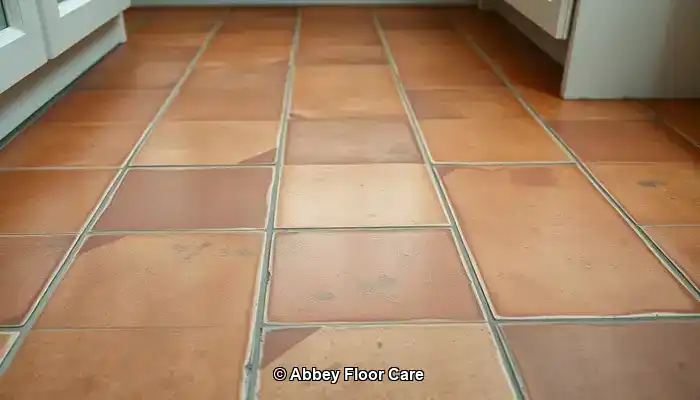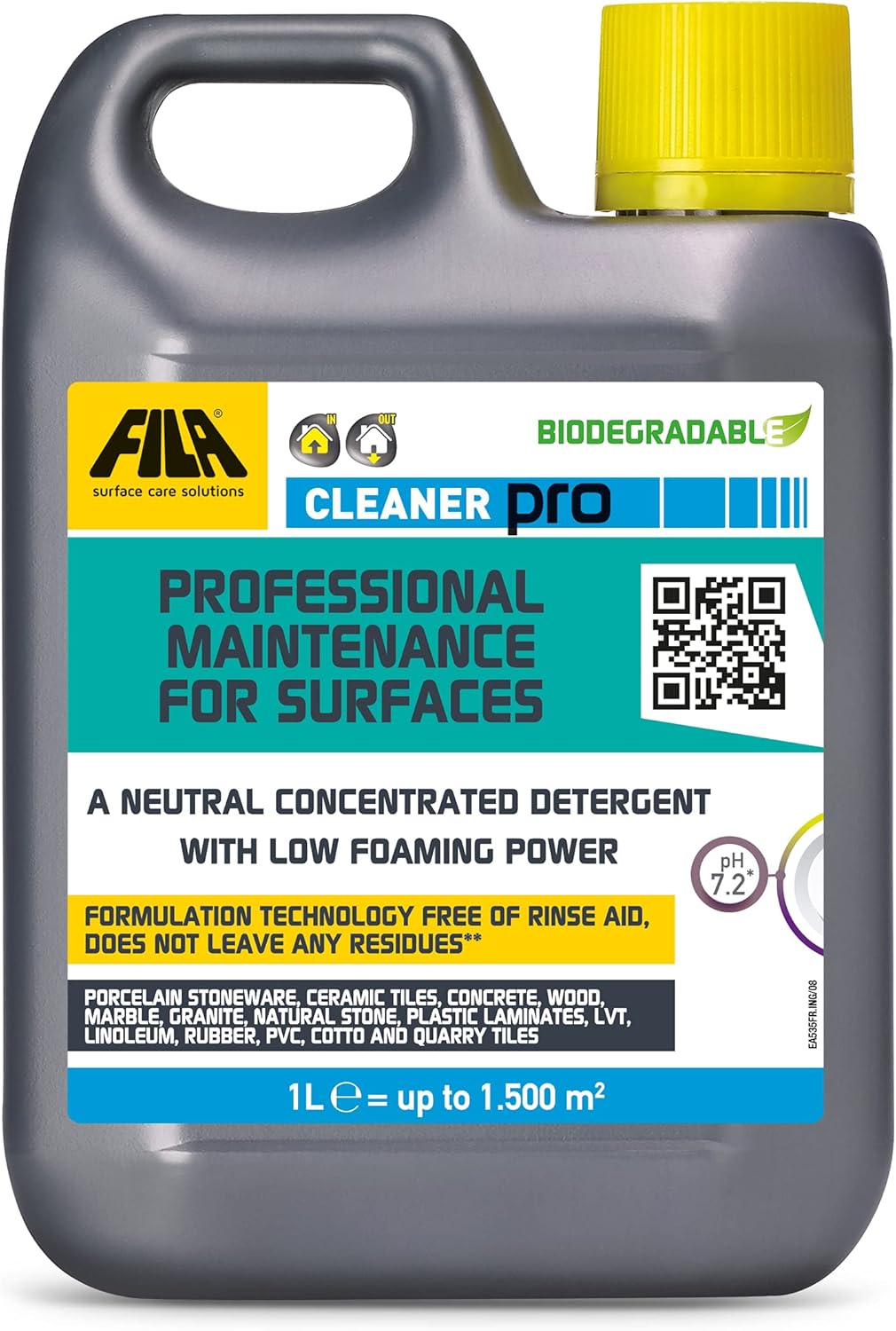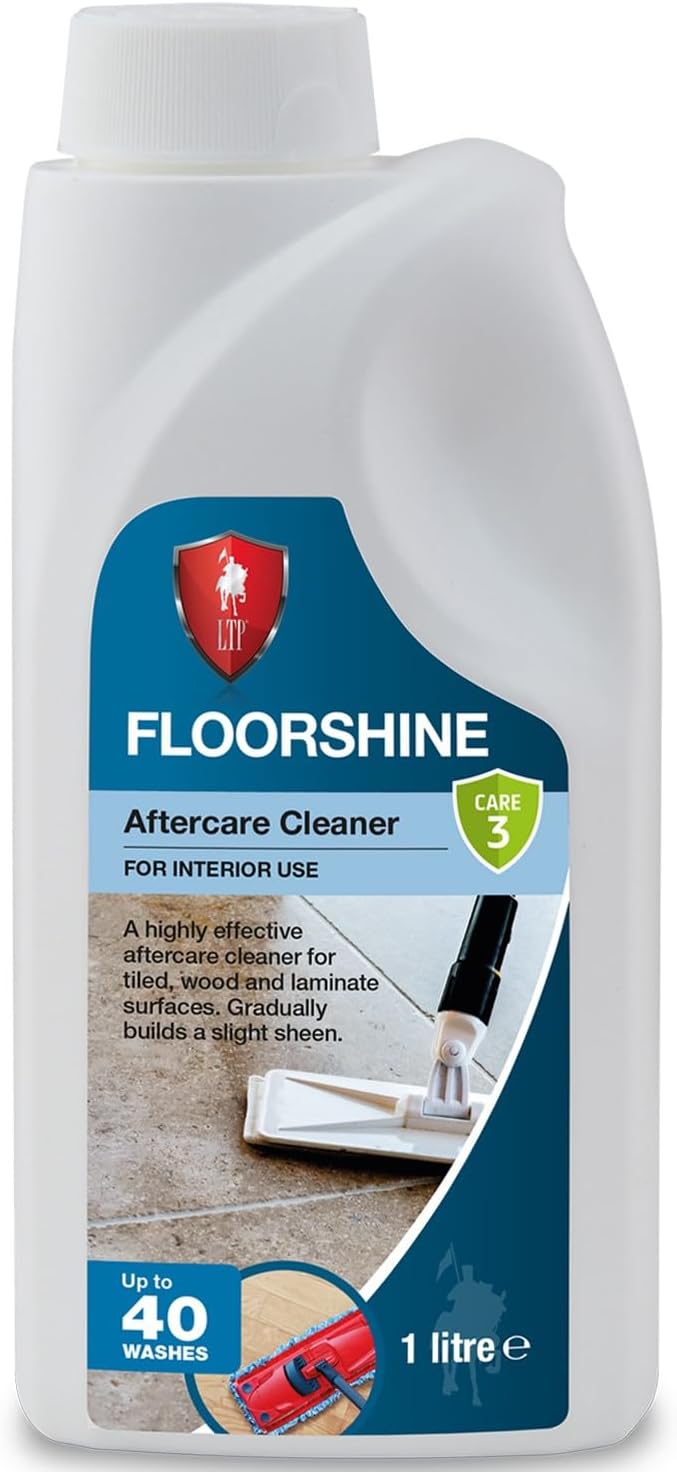Last Updated on September 29, 2025, by David
Essential Insights for Maintaining Clean Terracotta Floors
-
- Terracotta tiles are extremely porous, making them susceptible to quick dirt absorption, particularly in humid environments such as Surrey.
- Effective sealing is crucial to prevent moisture and grime from infiltrating the tile surface.
- Regular maintenance is vital—daily sweeping and weekly mopping with pH-neutral cleaners are essential for preserving the tiles' aesthetic appeal.
- Avoid harsh chemicals and steam mops, as these can damage the sealant and etch the tile surface.
- Eco-friendly products are highly recommended, especially in homes with children or pets.
- Professional restoration services can provide deep cleaning and resealing for long-lasting protection.
- Strategically placed rugs and mats in busy areas can greatly reduce dirt transfer.
- <b>Moisture management is essential</b>—ensuring good ventilation and prompt spill clean-up can prevent staining and mould growth.
Why Does Terracotta Become Dirty So Quickly?

Terracotta Cleaning Tips for Long-Lasting Freshness: Terracotta tiles offer an aesthetically pleasing flooring option, particularly in traditional or rustic-style homes throughout Surrey. Their warm hues and natural textures enhance the character of any interior space. However, despite its visual appeal, terracotta is known to become dirty quickly, and understanding the underlying causes is crucial to maintaining its cleanliness.
Expert Tip: Recommended Products for Daily Terracotta Maintenance

Fila Pro Floor Cleaner
|

LTP Floorshine
|

Vileda H2PrO Spin Mop System
|
Understanding Porosity: The Hidden Issue
Terracotta is constructed from natural clay and is fired at lower temperatures than many other tile types. This manufacturing process results in a highly porous surface that absorbs moisture, oils, and dirt, much like a sponge. This porosity allows grime to penetrate deeply into the tile, making standard cleaning methods less effective.
Unsealed terracotta is particularly susceptible to this issue. Without a protective layer, even minor spills or muddy footprints can leave persistent stains. Over time, this can cause the tiles to take on a dull, stained appearance that is difficult to rectify without professional assistance.
How Does Surrey’s Climate Contribute to Dirt Accumulation?
The climate in Surrey significantly influences how quickly terracotta flooring becomes dirty. The frequent rainfall and damp conditions characteristic of the region lead to increased moisture being tracked indoors, particularly in areas such as entryways and conservatories.
Homes located near wooded areas or gardens are even more vulnerable. Soil, pollen, and organic debris can easily transfer onto terracotta surfaces, especially when shoes are not removed at the door, elevating the risk of staining.
Which Daily Habits Accelerate Dirt Build-Up?
Aside from environmental factors, certain daily practices can exacerbate the issue. Using inappropriate cleaning products—such as acidic solutions or bleach—can strip away essential protective coatings and damage the tile’s surface. Steam mops, while popular for their convenience, can inadvertently push moisture into the tile, compounding the problem.
High-traffic areas, including kitchens and hallways, are particularly susceptible to wear and tear. If regular sweeping and mopping are neglected, dirt can accumulate quickly and become embedded within the tile’s texture, making it harder to clean.
Proactive Strategies for Maintaining Cleaner Terracotta

Maintaining clean terracotta floors effectively revolves around proactive measures, rather than merely reacting to dirt accumulation. In homes across Surrey, where damp weather and garden traffic are common, implementing a preventive care strategy is essential to preserving the natural beauty of terracotta tiles.
The Importance of Sealing: Your First Line of Defence
The most efficient method to prevent terracotta from becoming excessively dirty is through proper sealing. A high-grade, breathable sealant forms a protective barrier that repels moisture, oils, and grime. In Surrey homes, where humidity levels can fluctuate, sealing is crucial to prevent water absorption that can lead to staining and mould development.
Experts advise resealing terracotta every 12 to 18 months, depending on foot traffic and exposure. In areas such as kitchens, hallways, and conservatories—where daily activity is common—more frequent sealing may be necessary. Always opt for a sealant specifically designed for porous stone and avoid glossy finishes, which can trap dirt on the surface.
Smart Layout Choices: The Role of Rugs and Mats
Thoughtfully positioning rugs and mats can significantly lessen the volume of dirt that reaches your terracotta tiles. Install heavy-duty doormats at entrances to capture mud and moisture before they enter the home. In high-traffic areas such as hallways or beneath dining tables, area rugs serve as a protective buffer against wear and tear.
For rooms that connect to outdoor spaces, consider using washable runners that can be cleaned frequently. These not only protect the tiles but also enhance the warmth and style of your home.
Effective Moisture Management in Surrey Homes
The climate in Surrey, characterised by its rainfall and dampness, can accelerate the accumulation of dirt on terracotta. To counteract this, consider using dehumidifiers in enclosed areas and ensuring adequate ventilation throughout your home. Promptly clean up spills and avoid leaving wet items—such as shoes or towels—on the floor.
If your terracotta is installed in a conservatory or garden room, think about fitting blinds or UV filters to mitigate condensation and potential sun damage. These small adjustments can greatly influence how your tiles age over time.
By integrating sealing, strategic design choices, and moisture control, homeowners in Surrey can significantly diminish the rate at which terracotta floors become dirty. In the following section, we will explore optimal cleaning practices to maintain that fresh and natural appearance day after day.
Optimal Cleaning Techniques for Terracotta Tiles

Even with appropriate sealing and preventive measures, terracotta floors require regular maintenance to preserve their innate beauty. The essential aspect is employing the right techniques and products that clean effectively without harming the tile’s porous texture.
Establishing a Daily and Weekly Maintenance Routine
In homes throughout Surrey, where outdoor elements frequently infiltrate interiors, daily sweeping or vacuuming is imperative. Use a soft-bristle broom or a vacuum with a hard-floor setting to remove dust, grit, and organic debris before they settle into the tile.
For weekly cleaning, mop the floor using warm water and a pH-neutral cleaner specifically formulated for natural stone. Avoid saturating the floor—damp mopping is the optimal approach. Excess water can seep into the tile, leading to staining or mould growth, particularly in older or inadequately sealed installations.
Choosing the Right Cleaning Products
Opt for products that are both gentle and effective. Look for labels that indicate “stone-safe,” “non-acidic,” or “pH-neutral.” In Surrey, where eco-conscious living is increasingly popular, many homeowners prefer biodegradable cleaners that are safe for both pets and children.
Please refrain from using multi-surface cleaners containing bleach, ammonia, or citrus extracts, as these can strip away sealants and etch the terracotta, leaving it susceptible to future staining.
For persistent spots, utilise a soft cloth with a diluted solution of stone cleaner. Avoid scrubbing with abrasive pads or wire brushes—these can scratch the surface, making the tile increasingly difficult to clean over time.
What Should Be Avoided: Harsh Chemicals and Steam Cleaning
While steam mops may appear convenient, they are ill-suited for terracotta. The intense heat and moisture can seep into the tile and weaken the sealant, causing long-term damage. Likewise, acidic cleaners such as vinegar or lemon juice—even when diluted—can erode the tile’s surface and lead to discolouration.
Adhere to gentle methods and consistently test new products on a minor, inconspicuous area before applying them across the floor.
Professional Care vs DIY Methods for Terracotta Maintenance
When it comes to maintaining terracotta floors, many homeowners in Surrey initially lean towards DIY techniques. While routine sweeping and mopping can indeed help, there comes a point where professional intervention becomes not only beneficial but essential.
When Should You Contact a Surrey-Based Tile Specialist?
If your terracotta tiles show deep staining, uneven colour, or noticeable surface wear, it may be time to seek expert assistance. Professional tile care specialists in Surrey utilise advanced equipment and stone-safe products that penetrate deeper than standard household cleaners can. They can also evaluate whether your sealant has deteriorated and suggest an appropriate resealing schedule tailored to your home’s specific conditions.
Restoration services typically include deep cleaning, stain removal, and reapplication of breathable sealants that protect without altering the tile’s natural appearance. For older homes or heritage properties, specialists can even replicate the original finish to maintain authenticity.
Evaluating Cost vs Longevity: Is Professional Care Worth It?
While DIY cleaning may seem more economical, it often yields short-lived results. Without proper sealing and deep cleaning, dirt continues to accumulate—necessitating more frequent maintenance and risking irreversible damage.
In contrast, professional care extends the lifespan of your terracotta floors. A single restoration session can revitalise colour, eliminate embedded grime, and safeguard the surface for months or even years. In high-traffic areas like kitchens or hallways, this investment pays off through reduced upkeep and enhanced visual appeal.
Homeowners in Surrey who prioritise long-term property maintenance and curb appeal often find that expert services provide peace of mind alongside superior results. Additionally, many local providers offer eco-friendly options and tailored maintenance plans that cater to your lifestyle.
Safe and Eco-Friendly Cleaning Solutions
The earthy allure of terracotta deserves care that aligns with natural principles. For homeowners in Surrey looking to maintain their floors without compromising health or sustainability, eco-friendly cleaning options are the way forward. Thankfully, modern products and methods help protect your tiles—and your household—without resorting to harsh chemicals.
Utilising Non-Toxic Sealants and Cleaners
Conventional sealants often contain solvents that emit volatile organic compounds (VOCs), which can linger in the air and impact indoor air quality. Today's eco-friendly alternatives use water-based formulations that are low in VOCs and safe for use around children and pets.
When selecting a cleaner, look for labels that indicate “biodegradable,” “plant-based,” or “stone-safe.” These products are designed to remove dirt effectively without damaging terracotta's porous surface. Brands that focus on natural stone care frequently offer concentrated solutions that can be diluted for everyday use, minimising waste and excess packaging.
Child- and Pet-Safe Alternatives
In bustling Surrey households, safety is just as crucial as cleanliness. Avoid bleach, ammonia, and acidic cleaners like vinegar, which can not only harm the tile but also pose risks to pets and young children. Instead, choose gentle formulas made from coconut oil derivatives, citrus enzymes, or mineral-based ingredients.
For DIY enthusiasts, a simple mixture of warm water and a few drops of castile soap can be surprisingly effective for light cleaning. Just ensure to test any homemade solution on a small area first to confirm it won’t affect the sealant or the tile’s finish.
Incorporating Sustainable Cleaning Practices
Adopting eco-friendly care involves not just the products used, but also the habits developed. Use reusable microfiber cloths and mops in place of disposable pads. Regular sweeping can significantly decrease the necessity for frequent wet cleaning. When resealing, opt for products with recyclable packaging and minimal environmental impact.
Many floor care professionals in Surrey now offer green cleaning packages, employing certified non-toxic products and sustainable methods. If you’re unsure where to begin, scheduling a consultation with a local expert can help you establish a routine that is both effective and environmentally conscious.
Ensure Your Terracotta Floors Look Their Absolute Best
Terracotta flooring adds warmth, character, and enduring charm to homes in Surrey—yet its porous nature requires careful maintenance to keep it clean and vibrant. By understanding the causes of rapid dirt accumulation, sealing effectively, and adopting intelligent cleaning habits, you can substantially reduce gribuild-updup and extend the lifespan of your tiles.
Whether managing a busy household or restoring a heritage property, the secret lies in consistency. Daily sweeping, pH-neutral cleaning, and seasonal resealing contribute significantly to maintaining an attractive exterior. When stains or wear become evident, don’t hesitate to enlist a local specialist for professional restoration.
Utilising eco-friendly products and safe cleaning routines also guarantees that your floors remain beautiful without compromising your health or the environment. With the right approach, terracotta can remain a stunning element of your home for many years to come.
Ready to safeguard your floors the intelligent way? Contact us today for expert terracotta maintenance tailored specifically to the unique conditions of Surrey. Let’s work together to keep your home looking its very best—naturally.
Frequently Asked Questions about Terracotta Maintenance
Terracotta floors are timeless, but they require specific care. Below are answers to the most common questions homeowners in Surrey ask about maintaining their tiles in a clean, protected, and beautiful state.
How Frequently Should I Seal My Terracotta Tiles?
In the majority of Surrey homes, terracotta should be sealed approximately every 12 to 18 months. However, this timeframe depends on foot traffic, moisture exposure, and whether the tiles are located indoors or outdoors. Kitchens, hallways, and conservatories may require more frequent sealing. If your tiles are beginning to absorb water or appear dull, it’s time to consider resealing.
Can I Use Vinegar or Bleach on Terracotta?
No—vinegar, bleach, and other acidic or harsh cleaning agents can harm terracotta. These substances can deteriorate sealants and etch the tile surface, resulting in permanent discolouration. Always opt for pH-neutral, stone-safe cleaners designed specifically for porous flooring.
What’s the Best Mop for Terracotta Floors?
A microfiber mop is ideal. It effectively traps dust and dirt without scratching the surface and utilises minimal water, which is vital for porous tiles like terracotta. Avoid sponge mops or steam mops, as they can oversaturate the tile and compromise the sealant.
Is It Safe to Use DIY Cleaning Solutions?
Yes, but with caution. A mild mixture of warm water and castile soap can be effective for light cleaning. Always test any homemade solution on a small, hidden area first. Avoid anything acidic or abrasive, and refrain from using homemade cleaners on unsealed tiles.
What Should I Do If My Tiles Are Already Stained?
If stains have already set in, professional restoration is your best option. Tile care specialists based in Surrey can deep clean, remove embedded grime, and reseal the surface to restore the tile’s original colour and texture. DIY methods may exacerbate the damage if inappropriate products are used.
The Article: Tired of Dirty Terracotta? How to Keep It Clean Longer was first found on https://www.abbeyfloorcare.co.uk.


